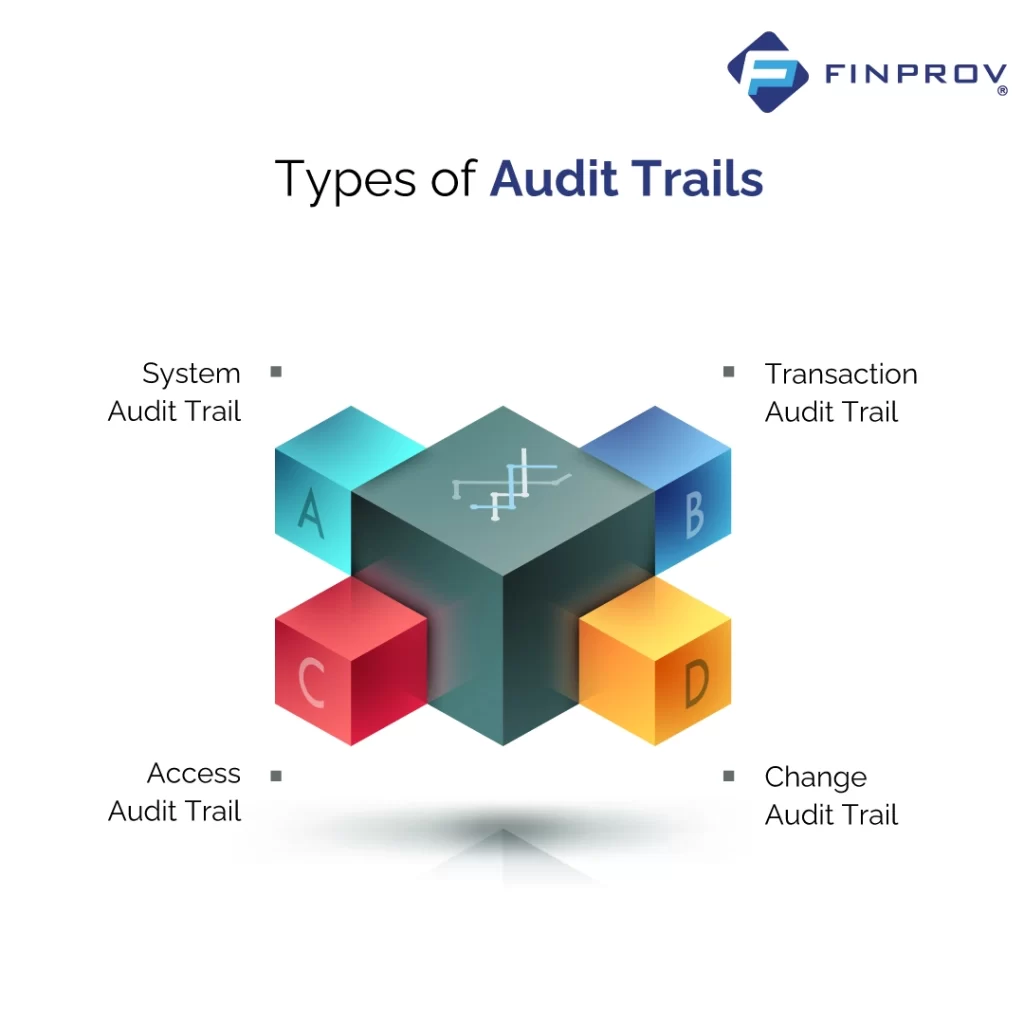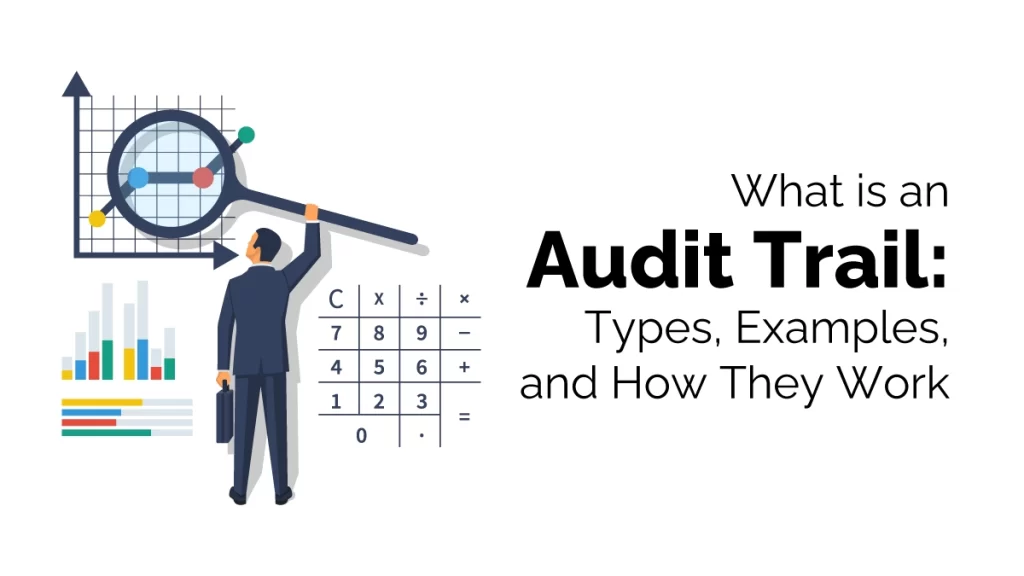“Uncontrolled access to data, with no audit trail of activity and no oversight, would be going too far. This applies to both commercial and government use of data about people”-John Poindexter (Former National Security Advisor of the United States)
Have you ever wondered how businesses and government agencies protect their sensitive data from unauthorised access or tampering? How do they ensure that their data is accurate and secure? The answer lies in the use of audit trails. An audit trail is a critical component of data security and integrity. It is a record of events or transactions that are stored in a log file, allowing businesses and organisations to track any changes made to their data. Let’s explore the types of audit trails, provide examples of their use in various industries, and explain how they work.
What is an Audit Trail?
A comprehensive record encompassing all events and actions within a system, application, or network is known as an audit trail. It is a chronological record that tracks the who, what, when, and where of all activities within a system. An audit trail is usually created automatically by the system, but it can also be generated manually. New rules regarding audit trail have been introduced by the Ministry of Corporate Affairs (MCA) starting on April 1, 2023. The MCA has announced that companies are obligated to maintain an audit trail of all their transactions.
By summarising the audit trail concepts or the procedure, it can be defined as an audit trail is a record of a company which comprises the aspects such as financial transactions, operational activities and administrative tasks etc. More in a sense, the audit trail ensures transparency and accountability in business operations. And also, the detailed record of the financial transaction will be helpful in identifying financial irregularities in any transitions.
Why are Audit Trails Important?
Audit trails are essential for data security and integrity. They provide a complete history of all events and actions taken within a system, which is crucial for identifying and investigating any unauthorised access, changes, or errors. By assisting organisations in meeting regulatory requirements and industry standards like HIPAA, PCI-DSS, and SOX, audit trails play a vital role in ensuring compliance.
Along with transactions, the audit trail records any alterations made to the books of accounts, including the date and type of change. Moreover, as in the case of financial transactions, this record includes information such as the date, amount, and nature of each transaction. Furthermore, it contains information on all authorisations made for transactions and changes, as well as the names of the persons who authorised them. The audit trail also includes details on approvals and rejections of transactions and changes, with the names of the person who approved or rejected them.
Access to the books of accounts is also documented in the audit trail, including the time and dateof access, as well as the name of the person who accessed them. Finally, the audit trail documents all backup and restoration actions associated with the accounting records. This trail is crucial in maintaining the integrity of a company’s financial records and can serve as evidence in case of an investigation.
Types of Audit Trails
There are four main types of audit trails, each serving a specific purpose:

System Audit Trail: A system audit trail records all system-level events, such as system startups and shutdowns, user logins and logouts, system configurations, and security-related events. System audit trails are essential for detecting system-level attacks, such as unauthorised access, malware infections, and configuration changes.
Transaction Audit Trail: A transaction audit trail records all transaction-level events, such as data entry, updates, deletions, and transfers. Transaction audit trails are essential for detecting and investigating data manipulation, fraud, and theft.
Access Audit Trail: An access audit trail records all access-level events, such as file and folder access, network connections, and remote access. Access audit trails are essential for detecting and investigating unauthorised access and data breaches.
Change Audit Trail: A change audit trail records all changes made to the system or application, such as software updates, patches, and configuration changes. Change audit trails are essential for detecting and investigating system vulnerabilities, misconfigurations, and errors.
Examples of Audit Trails:
Audit trails are used in various industries, including healthcare, finance, and government agencies, to ensure data security and integrity.
Banking and Finance: Audit trails are used to track financial transactions, including deposits, withdrawals, and transfers. This helps to prevent fraud and ensures compliance with financial regulations.
Financial Industry: Financial organisations use audit trails to comply with PCI-DSS and SOX regulations, which require the creation and retention of audit trails for all financial transactions and access to sensitive data. Audit trails are essential for detecting and investigating fraudulent transactions, unauthorised access, and errors in financial data.
Healthcare Industry: Healthcare organisations use audit trails to comply with HIPAA regulations, which require the creation and retention of audit trails for all electronically protected health information (ePHI). Audit trails are essential for detecting and investigating any unauthorised access, changes, or errors in patient data.
Government Agencies: Government agencies use audit trails to ensure transparency and accountability in their operations. Audit trails are essential for detecting and investigating any unauthorised access, changes, or errors in sensitive data, such as national security information, tax records, and criminal records.
E-commerce: Audit trails are used to track online purchases, including order details, payment information, and shipping addresses. This helps to prevent fraud and ensures compliance with e-commerce regulations.
How Audit Trails Work
Audit trails work by capturing information about events or transactions and storing that information in a log file. The log file is then used to generate reports or alerts based on predefined criteria. Audit trails can be created manually, but they are typically automated using software tools.
The process of creating an audit trail typically involves the following steps:
- Identify the events or transactions that need to be tracked.
- Configure the system or application to generate audit trail records for those events.
- Store the audit trail records in a secure location.
- Use software tools to analyse the audit trail records for anomalies or suspicious activity.
- Generate reports or alerts based on the analysis results.
The Benefits of Audit Trails
Audit trails provide several benefits, including:
Improved security and data integrity: Audit trails help to detect and prevent unauthorised access, modifications, or deletions of sensitive data.
Compliance with regulations and policies: Audit trails play a crucial role in ensuring adherence to industry regulations and internal policies by providing a means to track and verify compliance.
Forensic capabilities for investigating security breaches or other incidents: Audit trails provide a complete record of system activity that can be used to investigate security incidents or other types of incidents.
Improved operational efficiency by identifying areas for process improvements: Audit trails can be used to identify areas for process improvements, helping businesses to operate more efficiently.
Increased accountability for users and administrators: Audit trails provide a clear record of user and administrator activity, increasing accountability and helping to prevent fraud.
Ultimately, audit trails are an integral part of any organisation’s security and compliance strategy as they help prevent fraud, ensure adherence to regulations and policies, and enhance operational efficiency by tracking and recording system activity. According to the new regulation, businesses must maintain audit trail data records for eight years from the relevant financial year. It is essential for accounting aspirants, both in business firms and individuals seeking a career in the accounting sector, to understand concepts such as audit trail, audit planning, audit articulation 1 and 2, Income Tax, GST, and other financial elements to stay updated.
To upskill at each stage of your career journey, Finprov offers courses such as PGDIFA, PGBAT, CBAT, DIA, Income Tax, GST, etc., which are highly beneficial. Our team provides practical-oriented training based on real case studies. By obtaining valid certifications in various accounting courses and software such as SAP FICO, Tally Prime, Zoho Books, MS Excel, etc., aspirants can advance their accounting careers significantly.




















